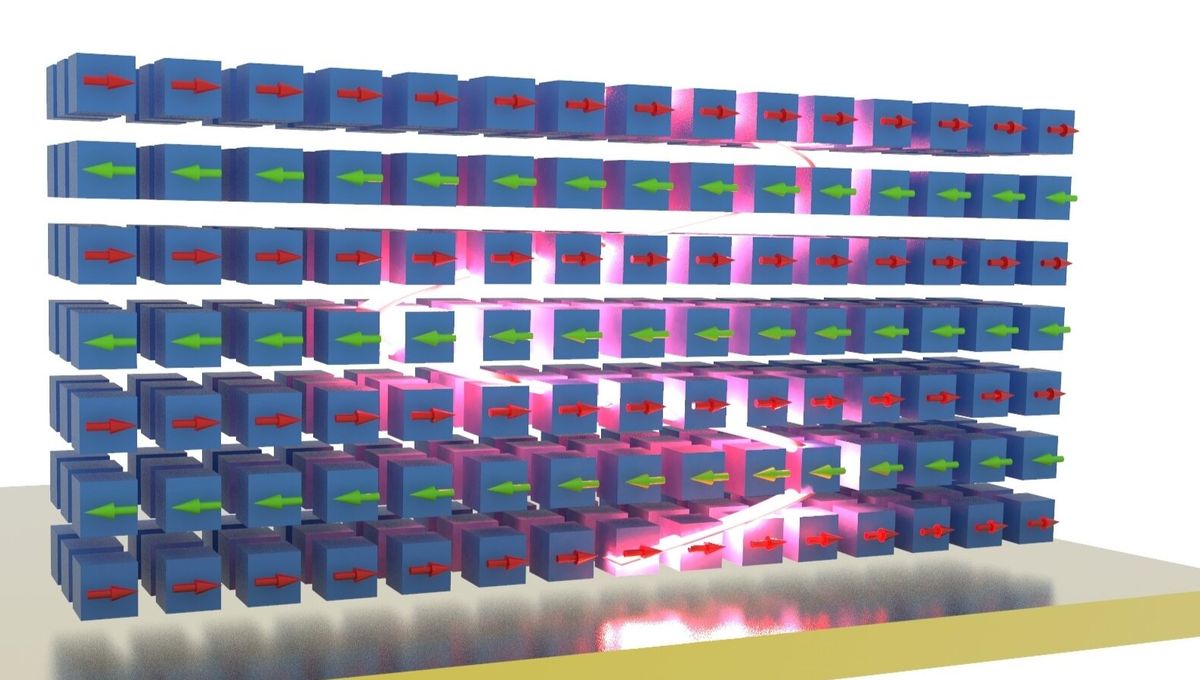
The vast majority of modern technology is about controlling electromagnetic phenomena. You are controlling electricity or charged particles, you are controlling magnets, or you are controlling light. Researchers have now shown a way to combine magnets and light, by trapping light inside a peculiar magnetic material.
The object is a layered magnetic semiconductor made of chromium, sulfur, and bromine. It is classed as a magnetic van der Waals material, a new type of two-dimensional metamaterial first reported in 2017. Metamaterials have properties that are not found in naturally occurring materials and hold potential for exciting applications.
What intrigued the researchers about this material is the ability to create an exciton, a quasiparticle that forms between an electron and an electron hole – the vacancy electrons leave in superconductors. These excitons behave like a particle moving about in the material and interacting with other particles as well as light.
The excitons can actually have strong interactions with light, and it is this property that the scientists focused on. When light is shone at the material, it interacts with the excitons in such a way that it becomes trapped, without any other external interactions. And by trapping the light, it becomes 10 times more magnetic.
“Since the light bounces back and forth inside the magnet, interactions are genuinely enhanced,” lead author Dr Florian Dirnberger, from City College of New York, said in a statement. “To give an example, when we apply an external magnetic field the near-infrared reflection of light is altered so much, the material basically changes its color. That’s a pretty strong magneto-optic response.”
Technology mixing light and magnetism is not common. Most approaches use a mix of electric and magnetic approaches or optical-electric. This material shows that light and magnets can go together as long as you have a special material that can respond in the right way.
“Ordinarily, light does not respond so strongly to magnetism,” said senior author and group leader Vinod M Menon. “This is why technological applications based on magneto-optic effects often require the implementation of sensitive optical detection schemes.”
“Technological applications of magnetic materials today are mostly related to magneto-electric phenomena. Given such strong interactions between magnetism and light, we can now hope to one day create magnetic lasers and may reconsider old concepts of optically controlled magnetic memory,” co-author Jiamin Quan added.
The study is published in the journal Nature.
Source Link: Light Trapped Inside A Metamaterial Makes It 10 Times More Magnetic